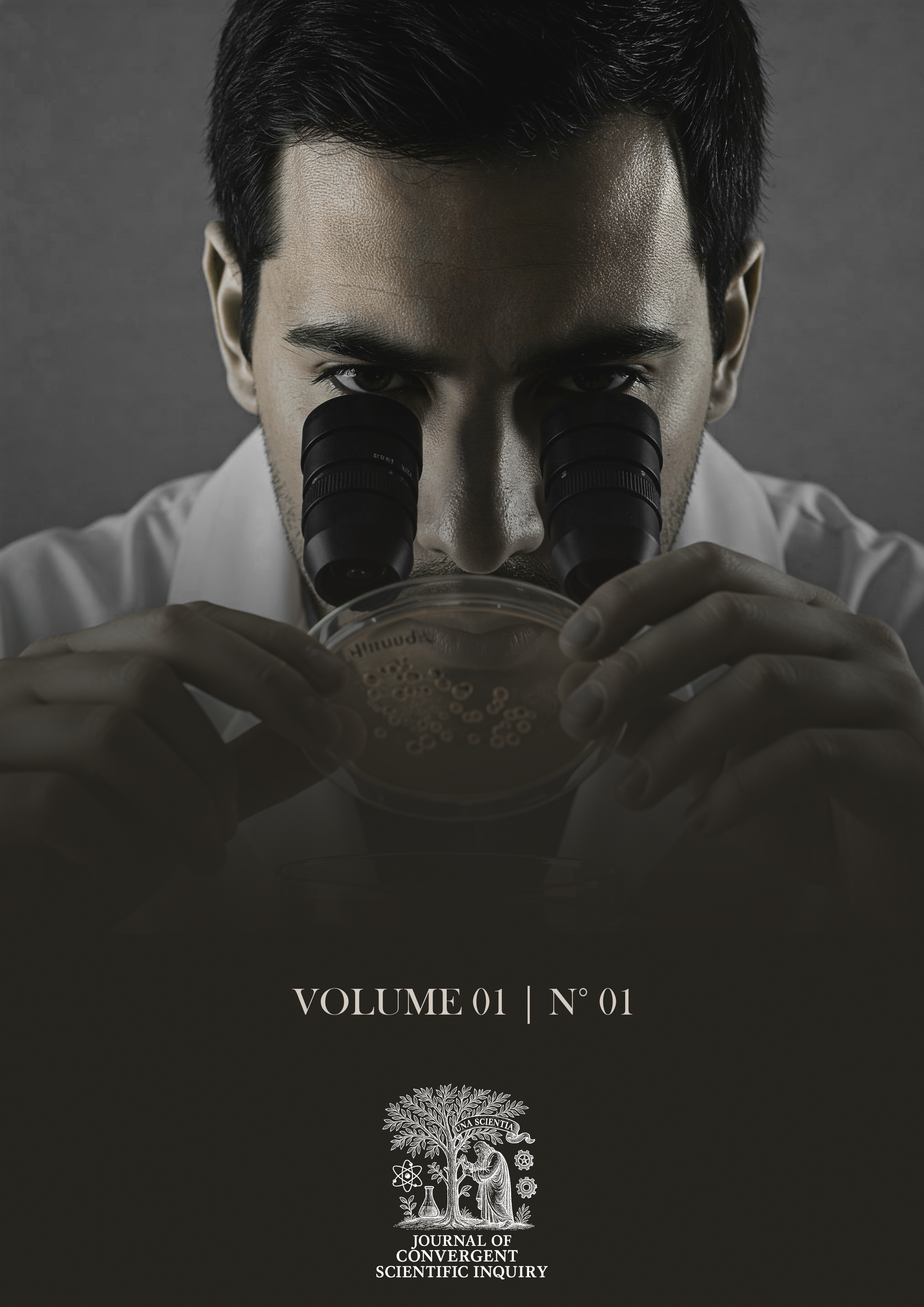Castor Bean (Ricinus communis) as a Dual-Use Crop: Green Process Engineering for Ricinoleic Acid and Biosafety Barriers against Ricin
Keywords:
Ricinus communis, Ácido Ricinoleico, Ricina, Óleos Vegetais, BiossegurançaAbstract
Ricinus communis is a dual-use crop that produces both high-value ricinoleic acid (RA) and the potent toxin ricin. This narrative review (2015-2025) assessed process and biosafety strategies that enhance RA yields while preventing toxic exposures. PubMed, Scopus and SciELO searches followed SANRA-6 guidance; five core studies met inclusion criteria. Green enzymatic hydrolysis (Lipozyme TL IM, 45 °C, pH 7) achieved mean RA conversions of 96 % with negligible by-products. Autoclave-plus-washing protocols lowered residual ricin in castor meal to < 0.1 mg kg⁻¹, allowing up to 45 % substitution for soybean meal in sheep and goat diets without performance loss. Integrating Good Manufacturing Practices, Hazard Analysis and blockchain-based traceability forms a robust barrier against accidental or intentional poisoning, while opening avenues for anti-inflammatory dermocosmetics and nanostructured drug-delivery systems. Research gaps include randomized clinical trials on RA, standardized biomarkers of ricin exposure and CRISPR-engineered low-ricin cultivars. Process engineering, toxicology and governance thus converge to turn the castor paradox into a model of responsible bio-innovation.
References
ABBES, M. et al. Ricin poisoning: a review on contamination source, diagnosis, treatment, prevention and reporting. Toxicon, v. 195, p. 86-92, 2021.
BODA, R. K.; MAJETI, N. V. P.; SUTHARI, S. Ricinus communis L. (castor bean) as a potential candidate for revegetating industrial waste contaminated sites in peri-urban greater Hyderabad: remarks on seed oil. Environmental Science and Pollution Research International, v. 24, n. 24, p. 19955-19964, 2017. DOI: 10.1007/s11356-017-9654-5.
CHAN, A. P. et al. Draft genome sequence of the oilseed species Ricinus communis. Nature Biotechnology, v. 28, n. 9, p. 951-956, 2010. DOI: 10.1038/nbt.1674.
FRANKE, H.; SCHOLL, R.; AIGNER, A. Ricin and Ricinus communis in Pharmacology and Toxicology-From Ancient Use and "Papyrus Ebers" to Modern Perspectives and "Poisonous Plant of the Year 2018". Naunyn-Schmiedeberg's Archives of Pharmacology, v. 392, n. 10, p. 1181-1208, 2019. DOI: 10.1007/s00210-019-01691-6.
LOPEZ NUNEZ, O. F.; PIZON, A. F.; TAMAMA, K. Ricin poisoning after oral ingestion of castor beans: a case report and review. J. Emerg. Med., v. 53, n. 5, p. e67-e71, 2017.
MAJUMDER, M. et al. Ricinus communis L. fruit extract inhibits migration/invasion, induces apoptosis in breast cancer cells and arrests tumor progression In Vivo. Scientific Reports, v. 9, n. 1, ID 14493, 2019. DOI: 10.1038/s41598-019-50769-x.
MENEZES, D. R. et al. Detoxified castor meal in substitution of soybean meal in sheep diet. Trop. Anim. Health Prod., v. 48, n. 2, p. 297-302, 2016.
NITBANI, F. O. et al. Preparation of ricinoleic acid from castor oil: a review. J. Oleo Sci., v. 71, n. 6, p. 781-793, 2022.
OLIVEIRA, C. H. et al. Meat quality assessment from young goats fed castor de-oiled cake. Meat Sci., v. 106, p. 16-24, 2015.
SOUSA, N. L. et al. Bio-detoxification of ricin in castor bean (Ricinus communis L.) seeds. Scientific Reports, v. 7, n. 1, ID 15385, 2017. DOI: 10.1038/s41598-017-15636-7.
Downloads
Published
How to Cite
Issue
Section
License
Copyright (c) 2024 Journal of Convergent Scientific Inquiry

This work is licensed under a Creative Commons Attribution 4.0 International License.
Direitos de Publicação e Licença
Ao submeter um artigo à Journal of Convergent Scientific Inquiry (ISSN 3085-8356), o(a) autor(a) concede à revista o direito de realizar sua primeira publicação. A revista possui periodicidade mensal. Após a publicação, o conteúdo passa a ser distribuído sob a licença Creative Commons Attribution 4.0 International (CC BY 4.0), permitindo que terceiros utilizem, reproduzam e compartilhem o material, desde que forneçam o devido crédito à publicação original, conforme o seguinte modelo: “Publicado em Journal of Convergent Scientific Inquiry, DOI: [número]”. Mais informações estão disponíveis em: https://creativecommons.org/licenses/by/4.0/.
Solicitação de Retirada de Artigos
Caso o(a) autor(a) deseje retirar o artigo antes da publicação, deverá encaminhar solicitação por escrito para o Editor-Chefe no endereço eletrônico editoraljcsi@gmail.com, com antecedência mínima de 20 dias da data prevista de publicação online. Após esse prazo, ou caso o artigo já tenha sido publicado, a retirada será permitida apenas em situações excepcionais, como comprovação de plágio ou fraude, a critério da equipe editorial.
A Journal of Convergent Scientific Inquiry é publicada por Vítor Rocha Leitão, está localizada na Avenida Governador Hélio Gueiros, nº 100, Bairro Coqueiro, Ananindeua, Pará, Brasil, CEP 67120-949. Contato: editoraljcsi@gmail.com.





